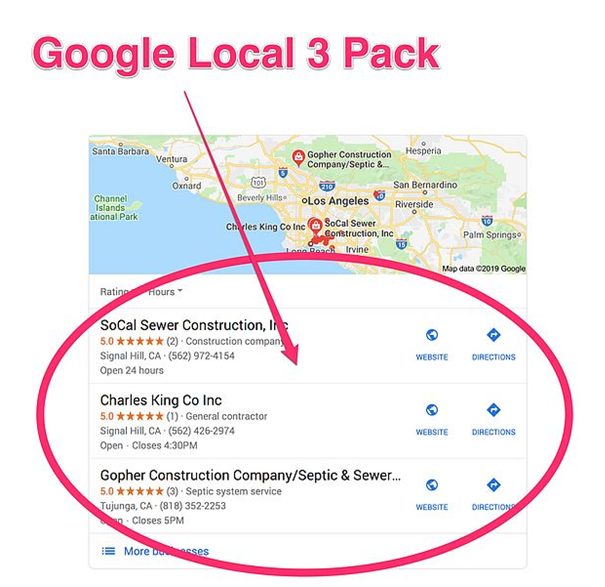Whether it’s increasing your conversions, or promoting brand awareness among the people in your neighborhood, local search engine optimization (SEO) can give you the edge you need to surpass your competitors. However, to get the most out of local SEO, you need the right combination of both on and off-page SEO, link building, social media marketing, voice search optimization, etc.
With so many factors to consider, it’s no wonder that so many small businesses fail to reap the full benefits of their local SEO efforts. If you’ve done your SEO ABCs, but still find yourself stuck and getting nowhere on local searches, you might be making one of these common local SEO mistakes.
1. Not knowing who your true local competitors are
In the past, a simple Google search on your competitors would give you all the information you needed. Nowadays, Google takes so many facets into account (location, personalization, intent matching, etc.) that you might find your pages ranking in multiple positions for the same keyword depending on the search language, the location of the searcher, or the device or browser used.
To find your true local competitors, do a Google search for each of your targeted keywords and fill a spreadsheet with the names of the competitors who rank in Google’s local 3 pack; the boxed area that appears on the first results page that gets as much 33 percent of the clicks. You’ll need to repeat this process in all of the locations near your business where you wish to rank, but once your list is full you’ll have a pretty clear idea of who your true local competitors are.
2. Looking for backlinks in the wrong places
Backlinks are one of the top three factors Google takes into account when ranking a website. However, in order to work, backlinks need to be highly relevant to your pages. So, if your link building strategy is focused on getting referrals from big websites, Google might consider that your pages don’t have local relevance.

A better tactic would be to seek referrals from your suppliers and business partners. Look for local businesses or organizations with could add value to your company and partner with them to increase your reach. Furthermore, you can also get mentions from sponsoring local charities or clubs, especially if you participate in an event that makes it to the online edition of your local newspaper.
Learn more about Google Lighthouse.
3. Having an unresponsive website
Most local searches today are done using mobile devices. To capture these high-intent visitors, your website should be optimized for user experience, which means having a responsive layout, a clean look, and quick loading times.

When reviewing your website s interface, try putting yourself on your visitors’ shoes. Are your landing pages easy to navigate and read? Does it take a 10-step quest to check out? Do your fill-in forms adjust to any screen size? Make sure your visitors can find what they’re looking for quickly and add social media sharing buttons to increase the reach of your products.
Learn more about GTmetrix website performance checker.
4. Neglecting your NAP citations
Citations are mentions of your business, which contain your business’s name, address, and phone number — which is shortened as NAP. According to Moz, citations are one of the top-ranking factors for local searches, so building your citations and ensuring they have consistent NAP information will do a lot for your Google ranking.

Make sure to list your NAP citations on all the major directories and business listings, including Facebook, Apple Maps, and — above all — Google My Business (GMB). Having your business’s information listed on these sites will allow potential customers to find your store more easily, which will translate into more sales and repeat customers.
5. Forgetting to optimize your images
Local searches aren’t limited to text. Thanks to the blended nature of search results, users can see image results on their search engine results page (SERP). So, what better way to stand out from your competitors than by having an attractive image show up in the SERP?
Since search engines can’t read images, you need to ensure they can understand their content and relevance by using relevant local search keywords in your alt tags, image names, and the text surrounding your images. Remember that the more these descriptions are related to the keywords searched, the higher the chance that your images will pop up in the results page.
Although local SEO isn’t that complicated, most small businesses fail to take full advantage of its numerous benefits. Which is good news for your business, since just by using these tips you’ll be more prepared than the majority of your competitors to rank highly on Google local searches.

So, what are you waiting for? Fix your local SEO mistakes now and watch your business take off as your competitors wonder how you did it!
Isaac Rau, of Proactive SEO Solutions in Los Angeles, CA, is a 17-year veteran in the SEO world. He has been doing search engine optimization all the way back to the pre-Google days of Looksmart, Ask Jeeves and Lycos. It takes “blood, sweat and tears” to get in the top 3!
